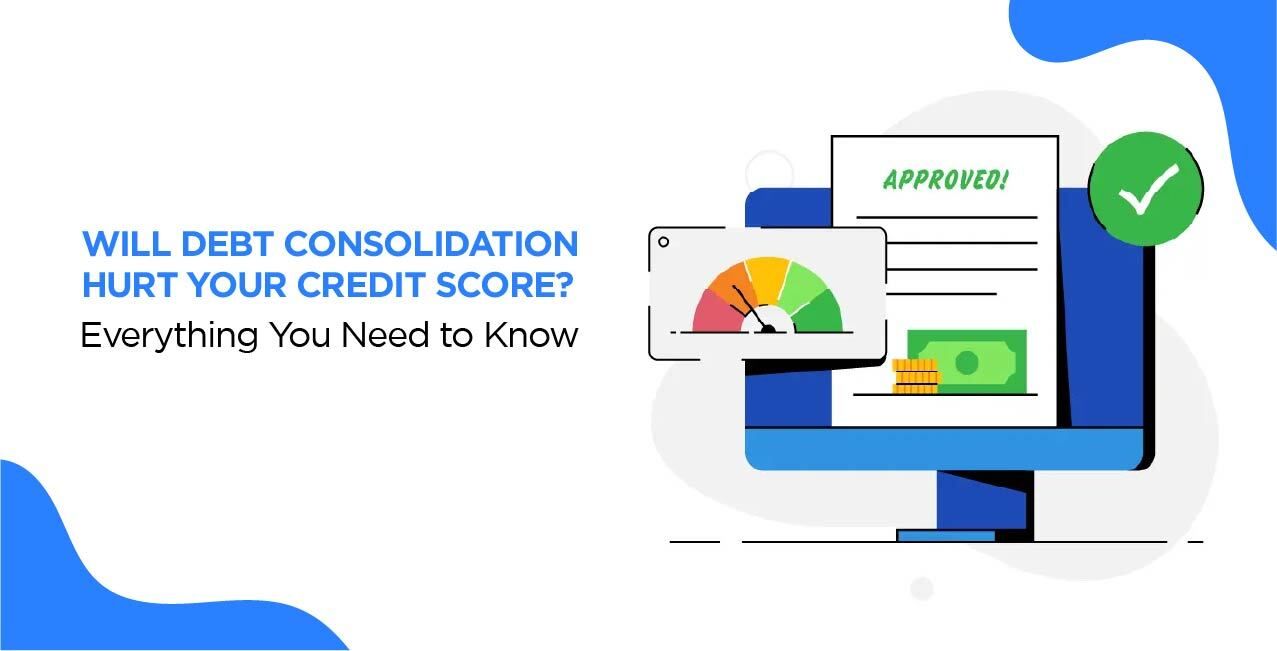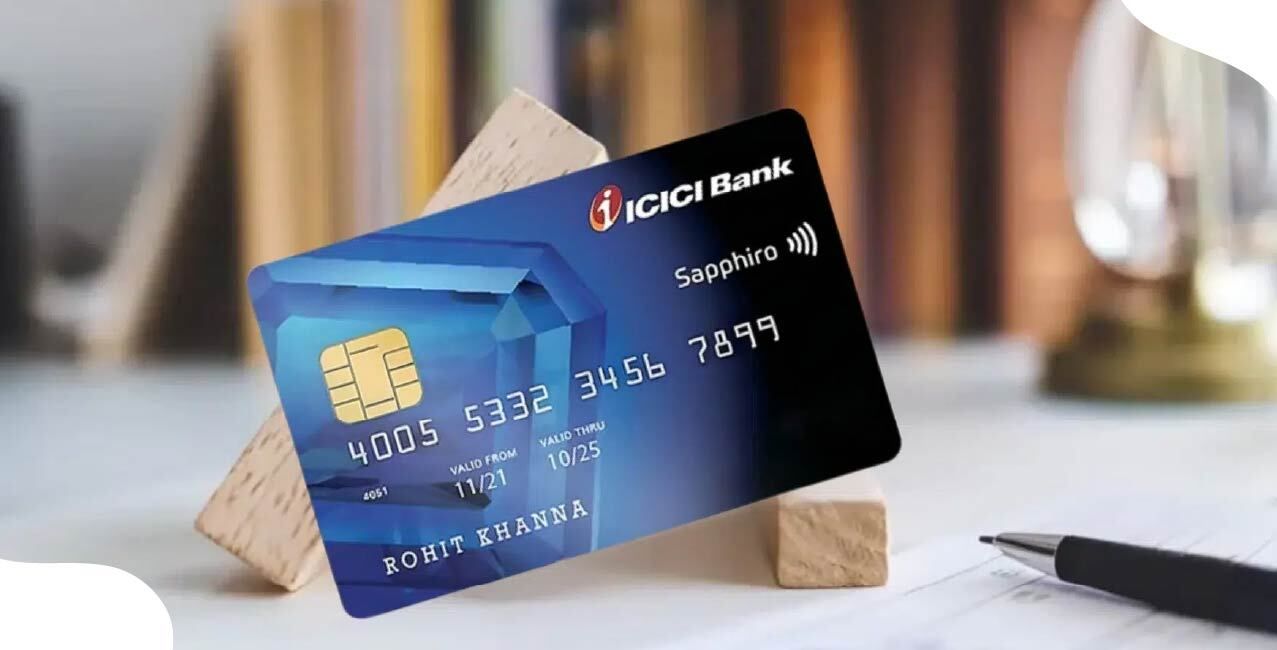
Author
LoansJagat Team
Read Time
8 Min
02 Apr 2025
Will Debt Consolidation Hurt Your Credit Score? Everything You Need to Know
Imagine Rajesh, a young Mumbai professional juggling multiple monthly credit card bills. He owes ₹1,00,000 across three cards, with interest rates ranging from 18% to 24%.
Managing these debts is stressful, and he's concerned about his credit score. Considering a debt consolidation loan at a 14% interest rate, he wonders, "Will this hurt my credit score?"
Rajesh's situation is not unique. In India, household debt has risen, reaching 41% of GDP in FY24, up from 37.9% in FY23. This growing debt burden has led many to explore debt consolidation as a solution.
Debt consolidation can simplify repayments by combining multiple debts into a single loan, often with a lower interest rate.
Why a High CIBIL Score Doesn’t Guarantee Loan Approval
Many people believe a high CIBIL score is enough to approve a loan. But that is not always true. Banks and financial institutions check many other factors before approving a loan. You may still face rejection if you only focus on your CIBIL score and ignore other things.
For example, Rajiv, a salaried professional, had a CIBIL score of of 800. He applied for a personal loan of ₹5,00,000 but was rejected because his income was not enough to repay the loan.
This shows that loan approval is not just about a high CIBIL score. Banks check income, employment stability, existing debt, and other factors.
Let’s understand how loan approval works beyond CIBIL scores and why many people still struggle to get loans despite good credit scores.
How Loan Approval Works Beyond CIBIL Scores?
Your CIBIL score is an important factor, but banks do not approve loans based only on that. Here are the key things lenders check before approving a loan:
- Monthly Income: A high CIBIL score does not help if your income is low. Banks check if you can afford the EMI payments.
- Existing Loans and Debt: If you already have too many loans, banks may reject your new loan request.
- Employment Stability: A stable job means a steady income. Frequent job changes can lead to rejection.
- Loan Type and Amount: The loan amount should match your repayment ability. If you ask for a very high amount, banks may reject it.
- Credit Utilisation: Banks may consider you financially stressed if you use too much of your credit limit.
For example, Priya applied for a home loan of ₹30,00,000. She had a CIBIL score of 780, but her bank rejected her loan.
The reason? She already had a personal loan of ₹8,00,000 and a car loan of ₹6,00,000. Her total EMI burden was too high, and the bank was not confident about her ability to repay another loan.
This shows that loan approval depends on many factors, not just the CIBIL score. Now, let’s focus on one of the biggest reasons for rejection: insufficient income.
Insufficient Income for Loan Repayment
A high CIBIL score will not help if your income is insufficient to repay the loan. Banks check your Debt-to-Income Ratio (DTI) before approving a loan. This ratio tells banks how much of your income goes into paying EMIs.
Let’s take an example.
- Ramesh earns ₹50,000 per month.
- His current EMIs are ₹15,000 (car loan) and ₹10,000 (personal loan).
- His total EMI burden is ₹25,000.
- His DTI ratio = (₹25,000 / ₹50,000) × 100 = 50%
Most banks prefer a DTI ratio of below 40%. Since Ramesh's ratio is 50%, his new loan request will likely be rejected.
Here’s a simple table to understand how DTI affects loan approval:
Monthly Income (₹) | Existing EMI (₹) | DTI Ratio (%) | Loan Approval Chances |
50,000 | 10,000 | 20% | High |
50,000 | 20,000 | 40% | Moderate |
50,000 | 30,000 | 60% | Low |
This table shows that if your existing EMIs are too high, banks may reject your loan even if you have a high CIBIL score.
How to Improve Loan Approval Chances if Income is Low?
- Reduce Existing Debt: Pay off some loans before applying for a new one.
- Apply for a Smaller Loan: If your income is low, ask for a smaller loan amount.
- Increase Your Income: Show additional income sources like rent, part-time jobs, or freelancing.
- Add a Co-Applicant: Applying with a co-borrower who has a good income can increase approval chances.
For instance, Anjali applied for a business loan of ₹10,00,000. Her salary was ₹40,000 per month, and she already had a personal loan EMI of ₹12,000.
The bank rejected her loan. Later, she applied with her husband as a co-applicant, who earned ₹60,000 per month. This time, the bank approved the loan.
High Existing Debt Burden
Many people with a high CIBIL score still struggle to get loan approvals because they already have too many.
Banks and lenders check how much of your income goes into paying EMIs before approving a new loan. If a person has too many existing loans, lenders assume they may struggle to repay another loan.
For example, Rohan earns ₹75,000 per month and has an excellent CIBIL score of 810. However, he already has:
A home loan EMI of ₹25,000
- A car loan EMI of ₹10,000
- A personal loan EMI of ₹8,000
This means his total EMI burden is ₹43,000 per month, nearly 57% of his income. Most banks prefer EMI payments to be below 40% of monthly income. So, even with a high CIBIL score, his new loan request for ₹5,00,000 was rejected.
Reducing existing debt before applying for a new loan is necessary to improve approval chances.
Low Credit Mix and Thin Credit History
A low credit mix means a person has only one type of credit (e.g., only credit cards or personal loans). Lenders prefer people who have handled different kinds of loans responsibly.
A thin credit history means a person has very little or no credit history. Banks cannot judge their repayment behaviour if someone has never taken a loan or credit card.
For example, Suresh, 28, applied for a car loan of ₹7,00,000. He had a CIBIL score of 760 but was rejected because he had never taken a loan or credit card before. The bank had no history to check his repayment habits.
Here’s a comparison of different credit profiles:
Credit Profile | Loan Type | Approval Chances |
Only credit cards | No loans taken | Low – Lenders prefer borrowers with loan experience |
Only personal loans | No credit card usage | Moderate – Shows loan repayment ability but lacks variety |
Credit cards + home loan | Balanced credit mix | High – Shows ability to manage multiple credit types |
No loans, no credit cards | No credit history | Very Low – No repayment history for lenders to assess |
How to Improve Credit Mix and Build Credit History?
- Use a Credit Card Wisely: Even a small purchase on a credit card and paying it on time helps build credit history.
- Take a Small Loan and Repay on Time: A personal loan of ₹50,000 with regular payments can improve credit history.
- Become a Co-Borrower or Add a Co-Applicant: Applying with someone who has a strong credit profile helps.
- Opt for a Secured Credit Card: If someone is new to credit, a secured credit card (linked to a fixed deposit) helps build history.
Recent Multiple Loan Applications
Many people think applying for multiple loans increases their chances of getting one approved. But in reality, this does the opposite.
Every time a person applies for a loan, the bank checks their credit report through a process called a hard inquiry. Too many hard inquiries in a short time can make lenders think the person is desperate for credit, reducing their chances of approval.
For example, Ramesh wanted a personal loan of ₹5,00,000. He applied to five different banks within one month to find the best interest rate. But all banks rejected him. Why? Because multiple loan applications made him look high-risk, even though his CIBIL score was 780.
Here’s how multiple loan applications affect approval chances:
Number of Loan Applications in 6 Months | Impact on Credit Score | Approval Chances |
1-2 Applications | Minimal impact | High |
3-4 Applications | Moderate impact | Medium |
5+ Applications | Significant drop | Low |
How to Avoid Rejection Due to Multiple Applications?
- Compare loan offers before applying: Use online comparison tools instead of applying everywhere.
- Wait for a few months before reapplying: If a loan is rejected, wait at least six months before applying again.
- Check pre-approved offers: Many banks offer pre-approved loans that do not require a hard inquiry.
Errors in Credit Report Affecting Approval
Mistakes in a credit report can lead to loan rejection, even if a person has never missed a payment. These errors may include incorrect personal details, wrong loan status, or repayment mistakes that were not updated properly.
For example, Priya applied for a home loan of ₹20,00,000. Even though she had a CIBIL score of 790, the bank rejected her application. When she checked her credit report, she found that a closed personal loan of ₹2,00,000 was still showing as “unpaid.” She raised a dispute with CIBIL, and after correction, her loan was approved.
Here’s a table showing common credit report errors and their impact:
Common Error in Credit Report | Impact on Loan Approval | Solution |
Loan showing as unpaid when it is fully paid | Loan rejection | Raise a dispute with CIBIL |
Incorrect personal details (wrong PAN, name, etc.) | Verification failure | Update details through the bank |
Duplicate loan entries | Reduced credit score | Contact lender for correction |
Fraudulent loan or credit card entry | High risk flagged | Report fraud to credit bureau |
How to Fix Credit Report Errors
- Check your credit report every 6 months: Get a free report from CIBIL, Experian, or Equifax.
- Raise disputes for errors immediately: Contact the credit bureau and submit supporting documents.
- Keep loan closure proof: Always get a No Dues Certificate (NOC) after paying off a loan.
Conclusion
A high CIBIL score alone does not guarantee loan approval. Banks and lenders consider multiple factors such as income, existing debt, job stability, credit mix, and credit history before deciding.
Applying for too many loans quickly, having errors in a credit report, or high existing debt can significantly affect loan approval chances.
If a loan gets rejected, do not rush into multiple applications. Instead, identify the reason for rejection, improve financial health, and reapply after a few months.
Being financially responsible and aware can help improve your loan approval chances and prevent unnecessary credit score drops.
FAQs
1. Does debt consolidation always improve credit scores?
No, debt consolidation can initially cause a slight dip in your score due to a new loan inquiry, but regular EMI payments can improve your score over time.
2. How often should I check my credit report?
You should check your credit report at least once every six months to spot and correct errors before applying for loans.
3. What is the ideal debt-to-income (DTI) ratio for loan approval?
Most banks prefer a DTI ratio below 40%. A higher ratio may lead to loan rejection.
4. Can I get a loan with a CIBIL score below 700?
Yes, but it may come with higher interest rates. Some lenders may also require collateral or a guarantor.
5. How can I fix errors in my CIBIL report?
You can raise a dispute with CIBIL through their website, provide necessary documents, and get incorrect entries corrected within 30-45 days.
About the Author

LoansJagat Team
‘Simplify Finance for Everyone.’ This is the common goal of our team, as we try to explain any topic with relatable examples. From personal to business finance, managing EMIs to becoming debt-free, we do extensive research on each and every parameter, so you don’t have to. Scroll up and have a look at what 15+ years of experience in the BFSI sector looks like.

Quick Apply Loan
Subscribe Now
Related Blog Post


